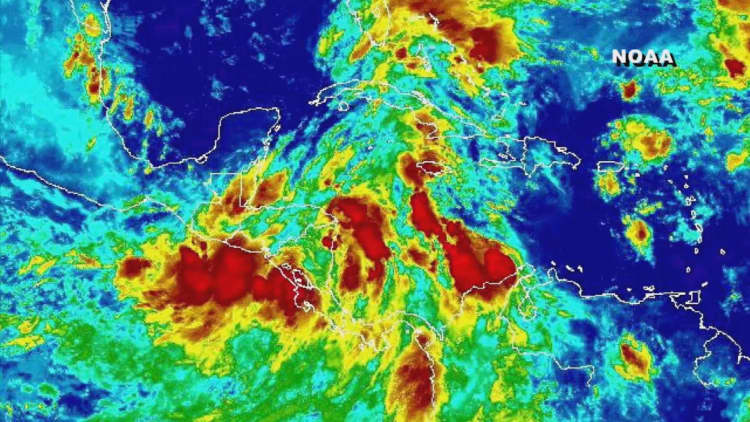
As Tropical Storm Nate continued on its course toward the Gulf of Mexico on Friday, energy companies shut down offshore oil and gas platforms, while Louisiana braced for a potential hurricane.
Nate is forecast to strengthen as it enters the Gulf and develop into a hurricane by the time it reaches the northern Gulf Coast on Saturday evening, the National Hurricane Center said Friday. Hurricane and storm surge watches are in effect for southeastern Louisiana, including New Orleans, through the Mississippi-Alabama border.
The Gulf is home to nearly one-fifth of all U.S. oil output. Drillers who pump crude from offshore platforms have lately produced at record levels above 1.7 million barrels a day. The region already had to contend with Hurricane Harvey in August.
"The major difference between Harvey and Nate is that the trajectory of Nate brings it right through the heart of the U.S. Gulf of Mexico oil and gas producing region," said Andy Lipow, president of Lipow Oil Associates.
BP and Chevron are ceasing production on all platforms in the Gulf of Mexico, Reuters reported. Royal Dutch Shell and Anadarko Petroleum dialed back activity, while Exxon Mobil, Statoil and others are withdrawing workers.
If Nate develops into a Category 2 or 3 hurricane, it could impact up to 80 percent of the Gulf's output, Lipow forecast.
The storm also has the potential to affect about 15 percent of U.S. refining capacity in the New Orleans area, Mississippi and Alabama. The region's biggest refineries include Exxon Mobil's Baton Rouge facility and Marathon Petroleum's Garyville, Louisiana, plant, both capable of turning out more than 500,000 barrels a day.
Hurricane Harvey shut about a quarter of the country's refining capacity along the Gulf Coast. Operations have almost returned to normal six weeks after Harvey pummeled southeastern Texas.
Flooding could put at risk infrastructure tied to the critical Colonial and Plantation pipelines, which move fuel from the Gulf Coast to the East Coast. That would be "bad news" for the Southeast and mid-Atlantic markets, Lipow says.

The Office of Homeland Security and Emergency Preparedness in Louisiana issued a state of emergency on Friday.
"High water is already a problem in many southeast Louisiana parishes," the agency's director, Jim Waskom, said. "High tides and easterly winds in recent days are impacting some areas ahead of the storm. Those conditions may worsen over the weekend."
Gasoline prices should continue to drop to a national average of roughly $2.42 if Nate develops into a Category 1 Hurricane and passes through the region quickly, Lipow forecast. If the storm lingers, oil prices could tick up $1 or $2 a barrel, but the cost of gasoline should remain stable because the market is well supplied with fuel, he said.
A shutdown of the Southwest Pass, the entrance to the Mississippi River, would affect crude oil imports to New Orleans refineries, as well as gasoline, diesel and petroleum product shipments to Florida, Latin America and Europe, according to Lipow.


